[title Mission Plan – May 6th]
[category mission-plan]
Mission plan MDRS Crew 212 6th May- 18 th May
LATAM III is a Latin American and European venture that has three objectives Science, Outreach and collaboration. Our crew consists of 7 crew members from 6 member states that will be performing 9 experiments these range from biological, engineering and astrophotography. In this brief report, we will explain our goals and how we will achieve them in two weeks.
1. Crew Description
1) Camila Marlen Castillo – Crew Commander
2) Vittorio Netti- Crew XO/HSO
3) Mariona Badenas-Agusti- Crew Astronomer
4) Camilo Zorro- Spacesuit Engineer
5) Héctor Palomeque – GreenHab Officer
6) Paolo Guardabasso- Crew Engineer
7) Zoe Townsend- Crew Journalist
2. Goals
We are representing a range of cultures from around the globe. We hope that in these two weeks we will work collaboratively to produce high quality scientific experiments and make life-long friends. Whilst undertaking out experiments we have also planned a variety of activities in the evenings that would help to develop this close friendship, these include a cultural night; where each of us will present national dishes and games from out countries. We plan to undertake this early on in the SIM as an ice breaker event. Other plans we have, includes celebrating the birthday of one of our crew members and also making sure that each day we have meals together
3. Experiments:
Solar observation/astrophotography/Stellar clusters
The Martian atmosphere is very thin in comparison to that of the Earth, so astronomical observations from Mars will be less affected by undesirable atmospheric effects like seeing and absorption. Given the remote location of the MDRS, which results in little light pollution near the MDRS Observatory, this Mars analog site offers a fantastic opportunity to conduct observations of the sky. Over the course of two weeks, we will use the MDRS-14 Robotic telescope (Celestron 14’’ Edge HD, 355.6 mm aperture, 3910 mm focal length, f/11 focal ratio) to generate colour-magnitude diagrams of selected open clusters and look for potential asteroids or other minor bodies; employ the MDRS-WF astrophotography instrument (StellarVue70, 70mm aperture, 336mm focal length, and f/4.8 focal ratio) to generate images of deep-sky objects; and utilize the MDRS Musk solar telescope to investigate the solar chromosphere through a Hydrogen-alpha filter.
X-5
The X-5 Drone is an experimental concept for an autonomous aerial platform designed to complement the initial human crews on the Martian surface. The X-5 is powered by lightweight’s flexible double-junction solar panels, which assure a dawn-sunset flight autonomy. Thanks to its VTOL capabilities, the Drone can autonomously take off and reach the mission objectives without the need for direct control from the crew. The X-5 Payload is composed by 2 cameras (one fixed global-shutter camera and one for navigation) and a huge range of sensors. The camera can be switched for more mission-specific payloads such as multispectral sensors or thermal vision devices. The operational scenarios covered by the X-5 are photogrammetry mapping, surface composition analysis, and search & rescue missions.
Vesta
In recent years, the possibility of using aerial vehicles on Mars has drawn the attention of engineers and scientists: drones have the potential to revolution planetary exploration, as they can travel higher and faster than rovers can but still allow high-resolution sensing. The main aim of the VESTA experiment (from the Roman goddess protector of the household) is to evaluate possible uses for drones in the proximity of the MDRS, in terms of operational complexity and utility of such an instrument, with regard to safety and crew time and necessary training. Two different scenarios will be evaluated: weather monitoring and settlement inspection.
Observation Rover
The next step in Space Exploration is the settlement on new bodies. In the future, the settlements reliance on Earth should be kept minimal relying on the compounds found naturally; in many cases, this can mean digging or mining this material. This project is the creation of a sample drilling station that can work in situ and with the integration of a rover. The rover will travel autonomously to areas of interest and deploy the drilling station. Data such as penetration depth, and speed, soil hardness and duration of mission will be recorded for analysis of the topology in the region. The project is a collaboration with the University West of England in Bristol and help from Catapult Satellite
Space Farming
Growing crops on the Mars surface will be necessary for its terraforming and human settlement. Despite Martian regolith seeming to have all the nutrients for plants development, unfortunately many of these nutrients are in low assimilable form. For that reason, bacteria interactions with regolith components will be an alternative for promoting nutrients uptake and plant nutrition, but microorganisms selected for this task need to survive against Mars environmental conditions. Regarding this scenario, extremophiles could play a key role due to their survival and adaption mechanisms under hazardous environmental conditions. This project, focuses on the application of Plant Growth-Promoting Bacteria (PGPB); isolated from extreme environments, over lettuce to study the effect of biofertilization into a soil similar to Martian regolith. We expect to have better production yields on lettuce growth parameters when it is inoculated with PGPB.
Keep talking
Physical confinement and isolation during long missions to Mars will influence even the best trained crew members. Space psychology is constantly investigating group interactions, with the aim of finding new methods for crew selection and training. For this human factors experiment, the members of Crew 212 will play a cooperation game each day, in order to observe and document the team’s problem-solving capabilities.
Ethnography study
The current work has an aim to carry out an ethnography observance in situ during our MDRS rotation. As an initial concept, ethnography is a research method that allows to dig out qualitative data about the behaviour of subjects and social groups. It can be analysed in the light of sociological and anthropological categories. It will let assess the isolation and confinement conditions and how they affect the group dynamics, with that to establish hypotheses about how this could affect the social web of a crew in a real mission.
Pulse oximeter measurement
Pulse oximeter measures will help to evaluate the functionality of sim suits through measures of pulse and SpO2 % in one of the crew members with different routines.
Software for macroscopic characterization
When isolating bacteria from soil, researchers describe macroscopic characteristics first. This helps to classify bacteria according to the size, shape, border and elevation of the colonies they produce. The aim of this project is to develop a software with image recognition capabilities that can help to classify bacteria according to their macroscopic characteristics. By the end of this project, the software will be able to produce a report with the amount of bacteria present on a plate and a clear classification of their morphology.
4. Other projects
In addition to our projects, various members of Crew 212 have and will be undertaking various interviews and science communication outreach. A selection of interviews include: Venezia nuova: la Repubblica, Mars Planet website blog, STEMinist vlog, ARA Catalonia and Recerca en Accio. Also, the LATAM III mission has been selected as a vendor at the science dome for WOMAD festival. In addition, two of our crew members were selected to participate at AMADEE20 in which they will also partake in the science workshop of AMADEE20 where they will be presenting their drones and talking about the performance at MDRS.
PLAN DE MISIÓN
MDRS Tripulación 212 6 Mayo – 18 Mayo
LATAM III es un equipo latinoamericano y europeo que tiene tres objetivos: Ciencia, divulgación y colaboración. Nuestra tripulación consiste de 7 miembros de 6 estados miembros que estarán realizando experimentos en campos tan diversos como la biología, la ingeniería y la astrofotografía. En este reporte, explicaremos nuestros objetivos y como los alcanzaremos en dos semanas.
1. Descripción de la tripulación
1) Camila Marlen Castillo – Comandante de tripulación
2) Vittorio Netti- Oficial ejecutivo / Oficial de salud y seguridad
3) Mariona Badenas-Agusti- Astrónoma de tripulación
4) Camilo Zorro- Ingeniero de trajes espaciales
5) Héctor Palomeque – Oficial de GreenHab
6) Paolo Guardabasso- Ingeniero de tripulación
7) Zoe Townsend- Periodista de tripulación
2. Objetivos
Representamos una variedad de culturas alrededor del globo. Esperamos que estas dos semanas sean de trabajo colaborativo para producir experimentos de alta calidad científica, y estrechar lazos de amistad para toda la vida. Además de realizar nuestros experimentos, también planeamos una variedad de actividades en las noches que nos puedan ayudar a desarrollar una amistad cercana. Esto incluye noches culturales, dónde presentamos platos nacionales y juegos de nuestros países. Planeamos realizar esto al inicio de la simulación, como evento para romper el hielo. Otros planes incluyen celebrar cumpleaños y tener comidas juntos.
3. Experimentos:
Observación solar/astrofotografía/Cúmulo de estrellas
La atmósfera marciana es muy delgada en comparación a la de la tierra, así que las observaciones astronómicas desde Marte serán menos afectadas por efectos atmosféricos innecesarios. Dada la locación remota de MDRS, que resulta en poca polución de luz cerca al observatorio MDRS, este análogo marciano ofrece una fantástica oportunidad para realizar observaciones del cielo. Durante las siguientes dos semanas, usaremos el telescopio robótico MDRS-14 (Celestron 14 Edge HD, 355.6 mm aperture, 3910 mm focal length, f/11 focal ratio) para generar diagramas color-magnitud de cúmulos abiertos seleccionados y mirar potenciales asteroides u otros cuerpos menores. Además emplearemos el instrumentos de astrofotografía (MDRS-WF) (StellarVue70, 70mm aperture, 336mm focal length, and f/4.8 focal ratio) para generar imágenes de objetos de cielo profundo, además de utilizar el telescopio solar MDRS Musk para investigar la cromósfera solar a través del filtro alfahidrógeno.
X-5
El dron X-5 es un concepto experimental para una plataforma aérea autónoma diseñado para complementar a las primeras tripulaciones humanas en la superficie marciana. El X-5 está equipado por paneles solares ligeros, flexibles y unidos, que aseguran una autonomía de vuelo dawn-sunset. Gracias a las capacidades del VTOL, el dron puede despegar autónomamente y realizar objetivos de misión sin necesidad de control directo de la tripulación. El X-5 está complementado por 2 cámaras y un gran rango de sensores. La cámara puede ser cambiada por otros complementos de misión, como sensores multiespectrales o implementos de visión termal. Los escenarios operativos cubiertos por el X-5 son el mapeo fotogramétrico, el análisis de composición de superficie y misiones de búsqueda y rescate.
Vesta
En años recientes, la posibilidad de usar vehículos aéreos en Marte ha atraído la atención de ingenieros y científicos: Los drones tienen el potencial de revolucionar la exploración planetaria, ya que pueden viajar más alto y rápido que los rovers, pero permiten, igualmente, una sensibilidad de alta-resolución. El principal objetivo del experimento VESTA (de la diosa romana protectora del hogar) es evaluar la posibilidad de usar drones en la proximidad de MDRS, en términos de complejidad operacional y utilidad de dicho instrumento, considerando la seguridad y el tiempo necesario de la tripulación. Dos escenarios distintos serán evaluados: Monitoreo del clima e inspección de asentamiento.
Rover de observación
El siguiente paso en la exploración espacial es el asentamiento de nuevos planetas. En el futuro, la dependencia de estos asentamientos en la tierra debería de ser mantenida al mínimo, utilizando, en cambio, los compuestos hallados naturalmente en el nuevo hábitat. En muchos casos, esto puede significar excavar o extraer este material. Este proyecto trata de la creación de una estación taladradora de muestras que puede trabajar in situ y con la integración de un rover. El rover puede viajar autónomamente a áreas de interés y aplicar la estación de taladro. Datos como la profundidad de la penetración, la velocidad, la dureza del suelo y la duración de la misión serán grabados para el análisis topológico de la región. El proyecto es una colaboracion con la University West of England in Bristol y la ayuda de Catapult Satellite Applications.
Agricultura espacial
El crecimiento de cultivos en la superficie marciana será necesario para su terraformación y el asentamiento humano. A pesar de que el regolito marciano parece tener todos los nutrientes para el desarrollo de plantas, lamentablemente, muchos de estos nutrientes están en forma poco asimilable. Por esa razón, las interacciones de bacterias con los componentes del regolito pueden ser una alternativa para promover la absorción de nutrientes y la nutrición de plantas. Pero los microorganismos seleccionados para este rol deben de sobrevivir a pesar de las condiciones ambientales de Marte. Viendo este escenario, los extremófilos pueden jugar un papel importante gracias a su supervivencia y mecanismos de adaptación en duras condiciones ambientales. Este proyecto se enfoca en la aplicación de bacterias promotoras del crecimiento de plantas (PGPB por sus siglas en inglés) aisladas de ambientes extremos en lechuga para estudiar los efectos de la biofertilización en suelo similar al regolito marciano. Esperamos tener una mejor producción de los parámetros de crecimiento de la lechuga cuando es inoculada con PGPB.
Keep talking
La confinación física y el aislamiento durante misiones largas a Marte influirán incluso en las tripulaciones mejor entrenadas. La psicología espacial está investigando constantemente interacciones de grupo, con el objetivo de encontrar nuevos métodos para la elección de una tripulación y su entrenamiento. Para este experimento de factor humano, los miembros de la tripulación 212 jugarán un juego competitivo cada día, para así observar y documentar las capacidades de resolución de problemas de los equipos.
Estudio etnográfico
El presente trabajo busca realizar una observación etnográfica in situ durante la rotación en MDRS. Como concepto inicial, la etnografía es un método de investigación que permite obtener data de calidad acerca del comportamiento de sujetos y grupos sociales. Puede ser analizada bajo las categorías sociológicas y antropológicas. Permitirá evaluar las condiciones de aislamiento y confinamiento y como afectan las dinámicas de grupo, y con esto establecer hipótesis acerca de cómo esto puede afectar las interacciones sociales de una tripulación en una misión real.
Medición de pulso y oximetría
Las mediciones de pulso y oximetría permitirán evaluar la funcionalidad de los trajes de simulación a través de medidas de pulso y SpO2 % en uno de los miembros de tripulación con distintas rutinas.
Software para la caracterización macroscópica
Al aislar bacterias del suelo, los investigadores suelen utilizar primero la descripción de características macroscópicas. Esto ayuda en la clasificación de bacterias de acuerdo con su tamaño, forma, borde y elevación de las colonias que produces. El objetivo de este proyecto es desarrollar un software para el reconocimiento de imágenes con capacidad de ayudar en la clasificación de acuerdo con características macroscópicas. Al término de este proyecto, el software debe de ser capaz de producir un reporte de la cantidad de bacterias presentes en un cultivo en placa petri y hacer una clara clasificación de la morfología.
4. Otros proyectos
En adición a nuestros proyectos, varios miembros de la Tripulación 212 tienen y participarán en varios trabajos de divulgación, como entrevistas y divulgación científica. Una selección de entrevistas incluye: Venezia nuova: La Repubblica, el blog Mars Planet, el vlog STEMinist, ARA Catalonia, N+1 y Recerca en Accio. Además, la misión LATAM III ha sido seleccionada para el domo científico del festival WOMAD. Además, dos de nuestros miembros de tripulación han sido seleccionados para participar en AMADEE20 en donde además participarán del taller científico de AMADEE2′, donde presentarán sus drones y su performance en MDRS.



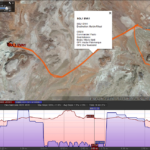
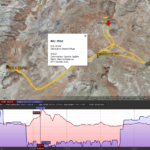
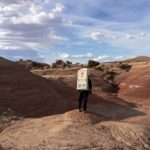
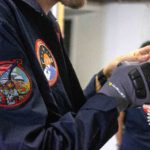
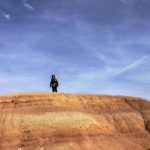
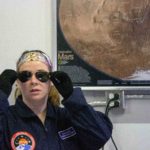
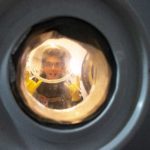
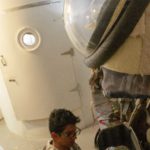
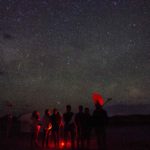
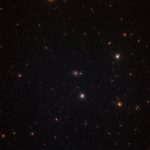
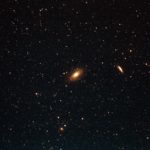
You must be logged in to post a comment.